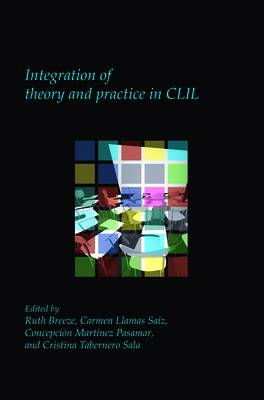
- Afhalen na 1 uur in een winkel met voorraad
- Gratis thuislevering in België vanaf € 30
- Ruim aanbod met 7 miljoen producten
- Afhalen na 1 uur in een winkel met voorraad
- Gratis thuislevering in België vanaf € 30
- Ruim aanbod met 7 miljoen producten
Zoeken
Integration of theory and practice in CLIL
€ 92,45
+ 184 punten
Omschrijving
Content and Language Integrated Learning (CLIL) has now become a feature of education in Europe from primary school to university level. CLIL programmes are intended to integrate language and content learning in a process of mutual enrichment. Yet there is little consensus as to how this is to be achieved, or how the outcomes of such programmes should be measured. It is evident that a further type of integration is required: that of bringing the practice of CLIL into closer contact with the theory. In this, it is necessary to establish the role played by other fundamental aspects of the learning process, including learner and teacher perspectives, learning strategies, task design and general pedagogical approaches. The first part of this book provides a variety of theoretical approaches to the question of what integration means in CLIL, addressing key skills and competences that are taught and learned in CLIL classrooms, and exploring the role of content and language teachers in achieving an integrated syllabus. The second part takes specific cases and experimental studies conducted at different educational levels and analyses them in the light of theoretical considerations.
Specificaties
Betrokkenen
- Uitgeverij:
Inhoud
- Aantal bladzijden:
- 212
- Taal:
- Engels
- Reeks:
- Reeksnummer:
- nr. 28
Eigenschappen
- Productcode (EAN):
- 9789042038141
- Verschijningsdatum:
- 1/01/2014
- Uitvoering:
- Paperback
- Formaat:
- Trade paperback (VS)
- Afmetingen:
- 152 mm x 229 mm
- Gewicht:
- 285 g

Alleen bij Standaard Boekhandel
+ 184 punten op je klantenkaart van Standaard Boekhandel
Beoordelingen
We publiceren alleen reviews die voldoen aan de voorwaarden voor reviews. Bekijk onze voorwaarden voor reviews.







